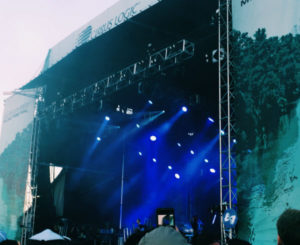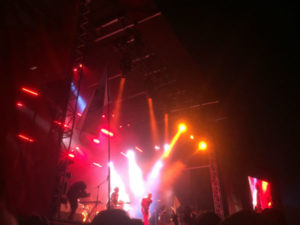Austin City Limits(less)
Posted on October 5, 2016, at 6:43 p.m.
by Melody Schmidt.
Since its inception, Austin City Limits (ACL) has brought 15 years of some of the world’s best live music to the city of Austin, Texas. But how did Austin City Limits, which started out as a relatively humble, little music festival back in 2002, grow to become one of the most attended festivals in the United States?
The evolution of ACL
ACL Music Festival was born out of the success of “Austin City Limits,” the longest-running music TV series in history, that’s featured the likes of Willie Nelson and Stevie Ray Vaughn since 1975. The first ACL festival began as a branding and promotion endeavor for the ACL TV show, thrown together in a few months by C3 Presents as a small-scale outdoor music festival that brought some local artists and notable names to the area. Little did festival planners know the event would garner over twice the projected attendance and expand to become one of the world’s premier music festivals, with attendance in 2014 topping 450,000.
2002:
* Two days
* Five stages
* 67 artists
* Price of a two-day pass: $45
* Attendance: 42,000/weekend
2015:
* Three days over two weekends
* Eight stages
* 140+ artists
* Price of a three-day pass: $255
* Attendance: 75,000 people/day
Building buzz
In 2013, C3 Presents expanded the festival with the addition of a second festival weekend. This bold move was intended to put the festival on the same playing field as other major festivals, like Coachella and Lollapalooza. It also satisfied the skyrocketing demand for tickets that was becoming increasingly hard to satisfy (tickets were known to completely sell out via email subscriptions the day before they went on sale to the general public).
From a PR perspective, ACL successfully implements several effective strategies in the months leading up to the festival, including new features every year. One of ACL’s most effective methods of reaching its key publics is its use of email marketing to keep the festival relevant year-round. Announcement emails are strategically staggered to build buzz for the festival without giving away too much, while newsletters keep ACL at the front of festival-goers’ minds year-round.
Festival announcement timeline
April: Promotion for upcoming lineup announcement
May: Lineup released with tickets going on sale a few hours later
June: Lineup-by-day schedule released
August: Promotions for contests and ticket giveaways; late night shows and food vendors announced
September: Festival tips and student ticket sale promotion
October: Closing thoughts, promotions begin for next year’s festival
This well-executed email campaign directs subscribers to the central hub of festival activity: ACL’s website. The festival website, much like the emails, provides useful tips for before, during and after the festival. In addition to key information (like the lineup, schedule and directions), there are several tabs for vendors, unique features like ACL Cashless, festival tips and even a live stream of select concerts. By making the festival accessible to those who can’t attend through a live stream of headlining bands, ACL already attracts new customers for future festivals before the current one has even concluded.
As with any major event, a short and clever hashtag is key to generating social media buzz and becoming a trending topic across platforms. Inviting festival-goers to join the conversation and share their own posts of the event helps to further promote the ACL brand. It allows ACL to reach outside audiences who may attend next year’s festival because of the FOMO they felt while watching their friend’s front-row video of Young the Giant. Those who attended the festival were also encouraged to post with the tag #ACLFest to have their photos featured on the huge concert screens in between sets to an audience of thousands.
In addition to these innovative tactics, ACL also utilizes more traditional forms of reaching audiences, like media placements in magazines and online newspapers. Partnerships with media giants like Rolling Stone, iHeartMedia and SiriusXM Radio promote the festival to wide audiences and build buzz before and during the festival while keeping it relevant in between festival weekends.
Other festivals could learn a lot from Austin City Limits about how to execute a stellar PR campaign. Year after year, ACL has exceeded attendance objectives and brought in record crowds to Austin, skyrocketing the city’s tourism industry to one of the most successful in the country. As for what new bands and exciting festival features are to come, we’ll just have to hold our breath until next year.







